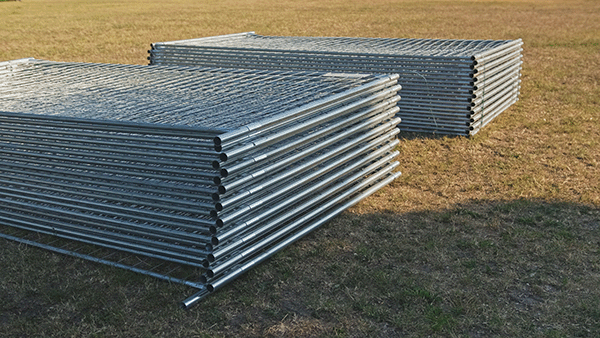Partner with Downstream

Securing your construction site isn’t just about keeping trespassers out—it’s about protecting workers, equipment, and the progress of your project. The right temporary fencing serves as a first line of defense against theft, vandalism, and safety hazards while ensuring compliance with local regulations. But with so many options available, how do you determine the best fit for your site? Whether you need high-security barriers, wind-resistant panels, or cost-effective perimeter control, this guide will help you navigate the choices and find the ideal fencing solution for your construction needs.

Temporary fencing is a crucial component of any construction site. It enhances security, ensures compliance with local regulations, and improves safety for workers and the public. Selecting the right type of temporary fencing depends on several factors, including site size, project duration, security concerns, and budget.
In this guide, we’ll walk you through the key considerations and types of temporary fencing available so you can make the best choice for your construction site.
If theft or vandalism is a concern, opt for sturdy fencing with added security features. Construction sites often contain valuable materials and equipment, making them prime targets for trespassers. A chain-link fence with barbed wire or anti-climb fencing can help deter unauthorized access.
According to the National Equipment Register, construction site theft costs the industry between $300 million and $1 billion annually. Read more about construction theft here.
Local regulations often dictate specific requirements for temporary fencing. OSHA (Occupational Safety and Health Administration) has strict guidelines on fencing to prevent accidents, especially near hazardous zones.
Make sure your fencing complies with height regulations, durability standards, and visibility requirements. In many locations, you must also install warning signs. Check OSHA regulations on temporary fencing.
In areas with strong winds, heavy rain, or snow, lightweight fencing might not be suitable. Instead, consider weighted or anchored fencing that won’t easily topple over. Sandbags or fence stabilizers can improve stability in extreme weather.

If your project requires frequent repositioning of fences, modular fencing options such as portable panel fencing are ideal. These fences are easy to move and set up without extensive labor.
Budget is always a factor. Chain-link fencing is cost-effective and provides good security, while mesh panel fencingis more expensive but offers better aesthetics and visibility. Renting fencing can also be more economical for short-term projects.
Best for: High-security needs, long-term projects
Pros: Durable, cost-effective, allows visibility
Cons: Can be climbed if not reinforced with barbed wire
This is one of the most common choices for construction sites due to its affordability and effectiveness. It can be reinforced with barbed wire or privacy screens for added security.
Best for: Short-term projects, easy installation
Pros: Lightweight, portable, aesthetically pleasing
Cons: Less secure than chain-link fencing
Welded wire panels are commonly used when security concerns are low, but safety and boundary marking are still important.
Best for: High-security areas, theft-prone locations
Pros: Prevents climbing, strong steel structure
Cons: Higher cost
Anti-climb fencing features small mesh openings that prevent intruders from scaling the fence, making it ideal for sites with valuable materials.
Best for: Crowd control, events near construction zones
Pros: Lightweight, easy to move
Cons: Not suitable for security purposes
This type of fencing is often used when construction sites are close to pedestrian walkways, ensuring safety for the public.
Best for: Urban construction sites, reducing dust and debris
Pros: Blocks visibility, improves aesthetics
Cons: Needs additional support in windy conditions
A privacy screen is often attached to chain-link fences to prevent unauthorized visibility into the site and reduce dust spread.
When securing a construction site, one key decision is whether to rent or buy your temporary fencing. While both options have their benefits, your choice will depend on factors such as project duration, budget, and long-term needs. Let’s break down the pros and cons of each option.
Renting is often the most practical solution for construction projects, especially those that are short-term or seasonal. Here are some benefits of renting:
While renting is ideal for most projects, purchasing fencing may be the better choice under certain conditions:
Despite the advantages, buying fencing comes with some challenges:
Downstream offers high-quality, secure, and OSHA-compliant temporary fencing for construction sites. With a variety of options, fast delivery, and flexible rental terms, Downstream ensures you get the best fencing solution tailored to your project.
Secure your site with hassle-free, reliable fencing rentals from Downstream—the expert partner for construction site security!
Choosing the right temporary fencing is essential for security, safety, and regulatory compliance on a construction site. By assessing your site’s needs—whether it’s high security, public safety, or budget constraints—you can find the best fencing option for your project.
-min.webp)
Quis nostrud exercitation ullamco laboris nisi ut aliquip ex ea commodo consequat. Duis aute irure dolor in voluptate.
